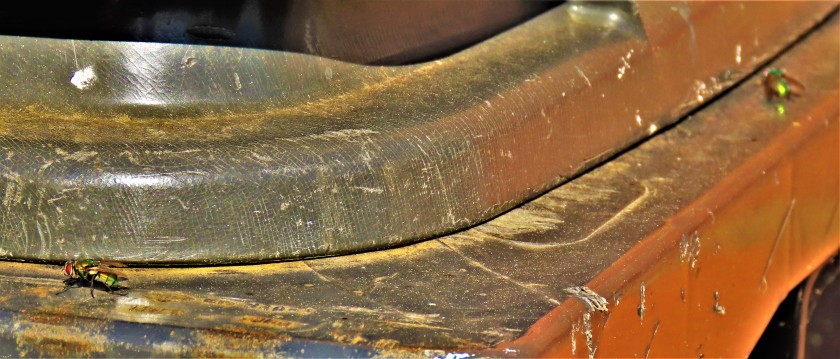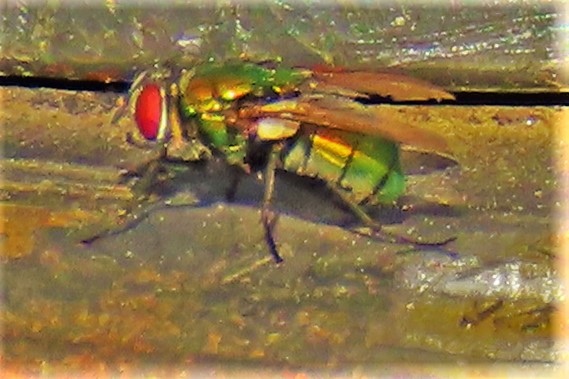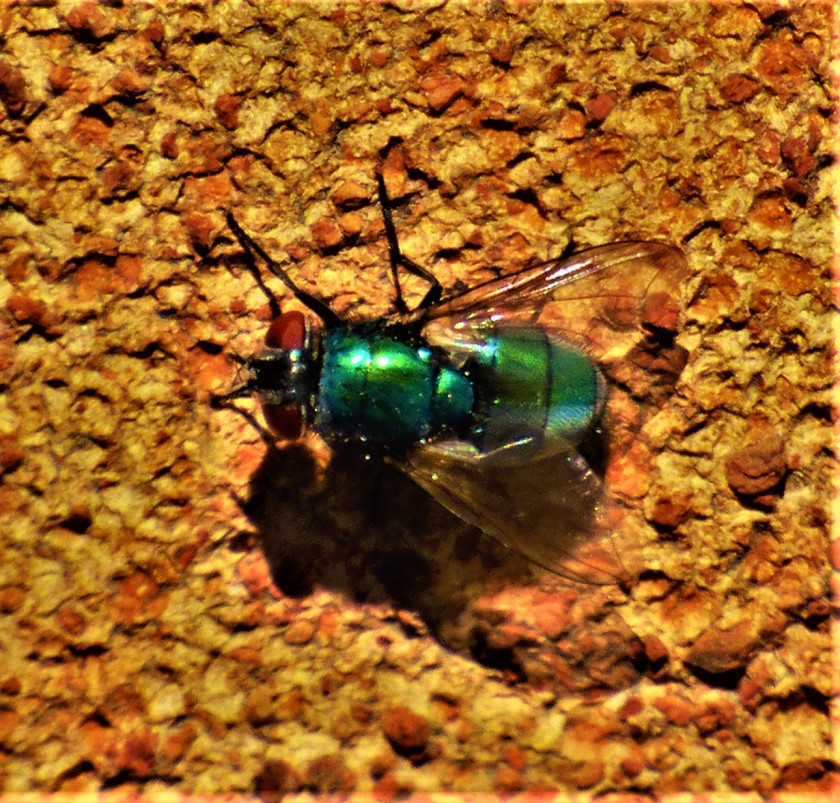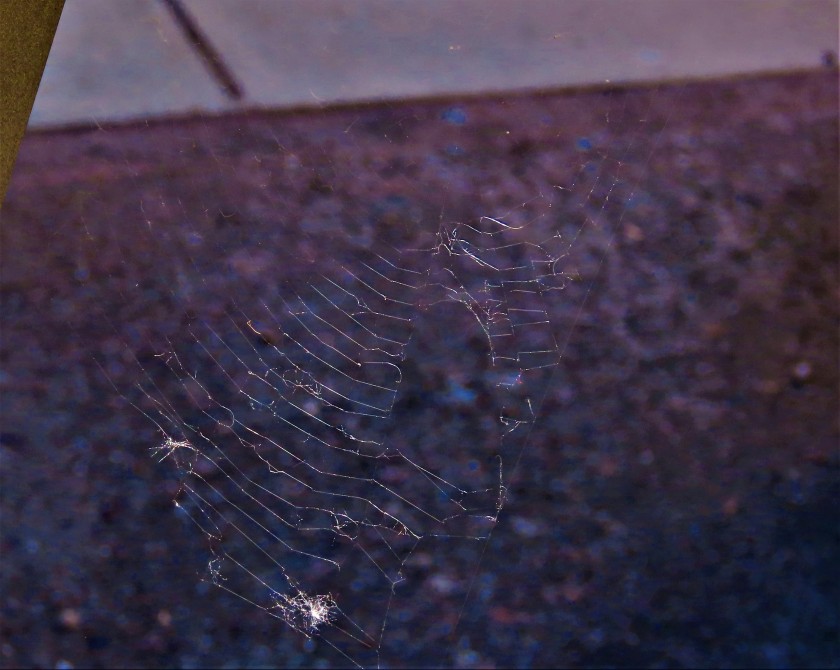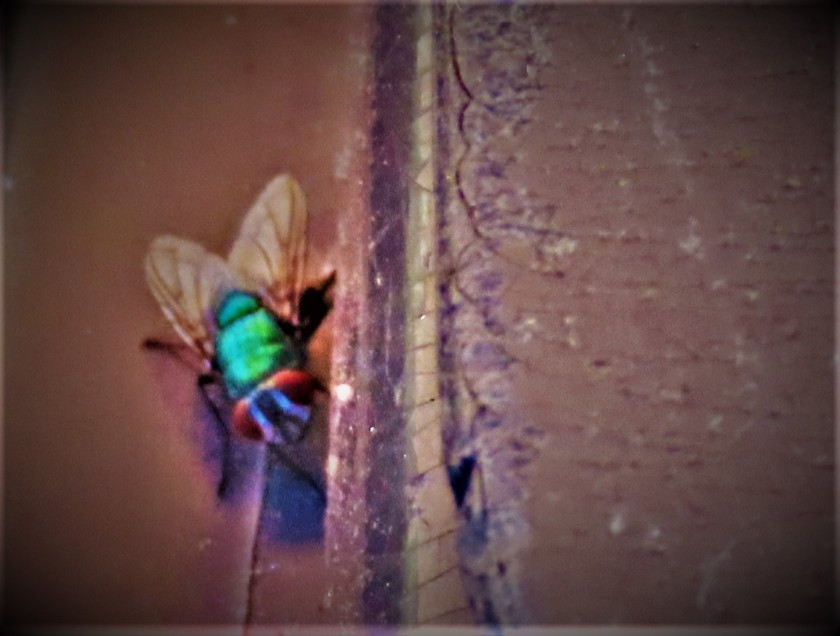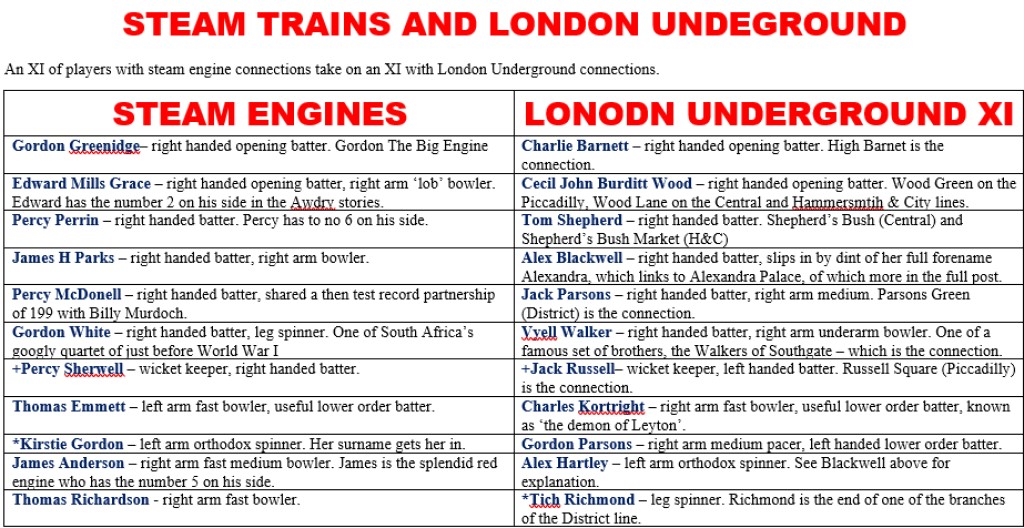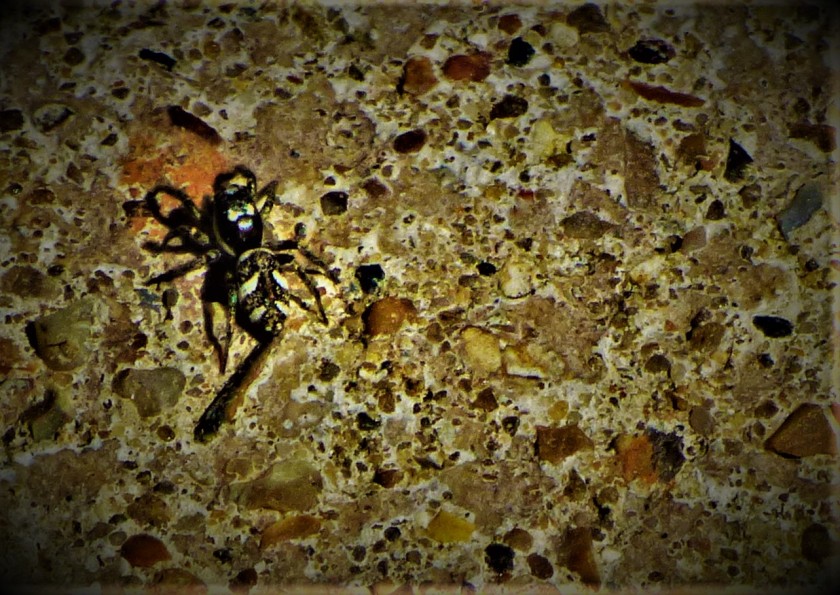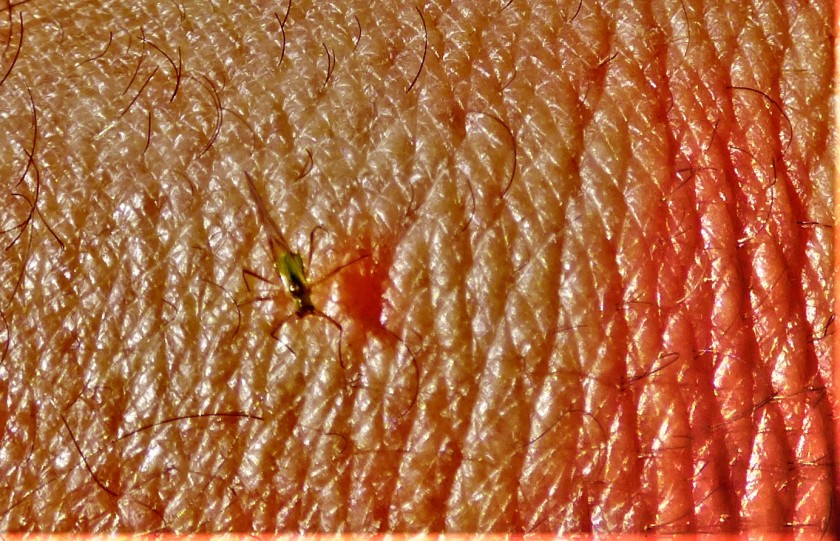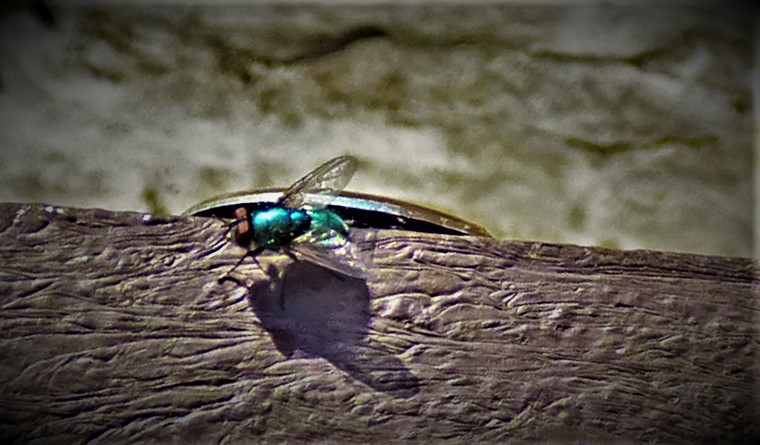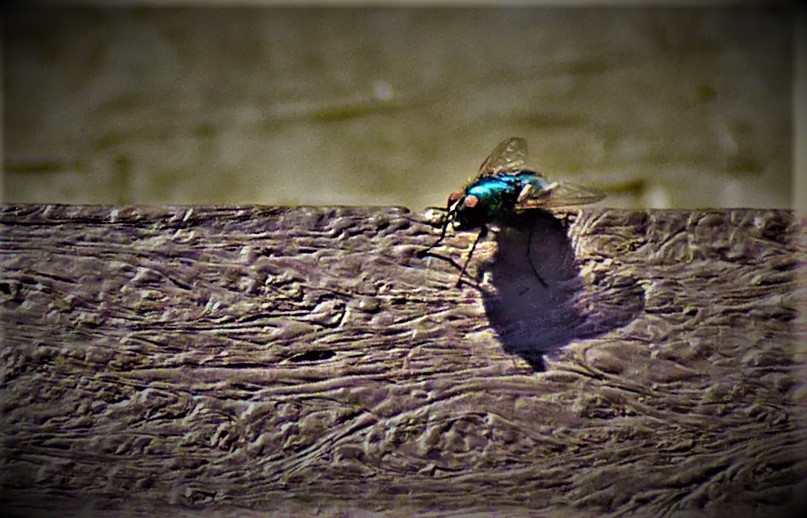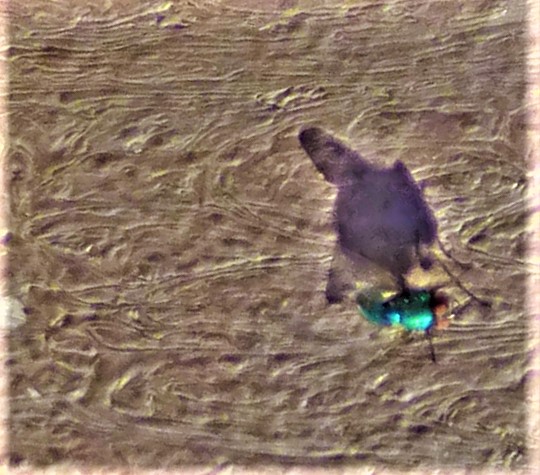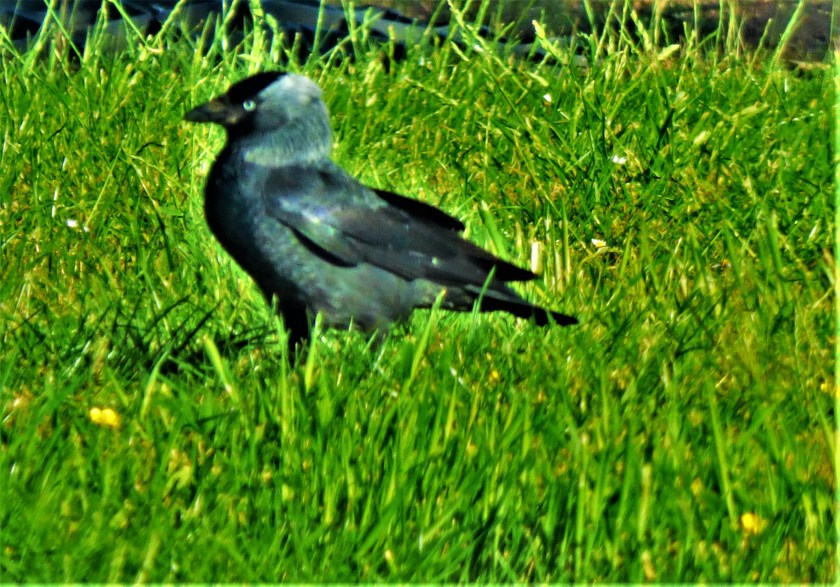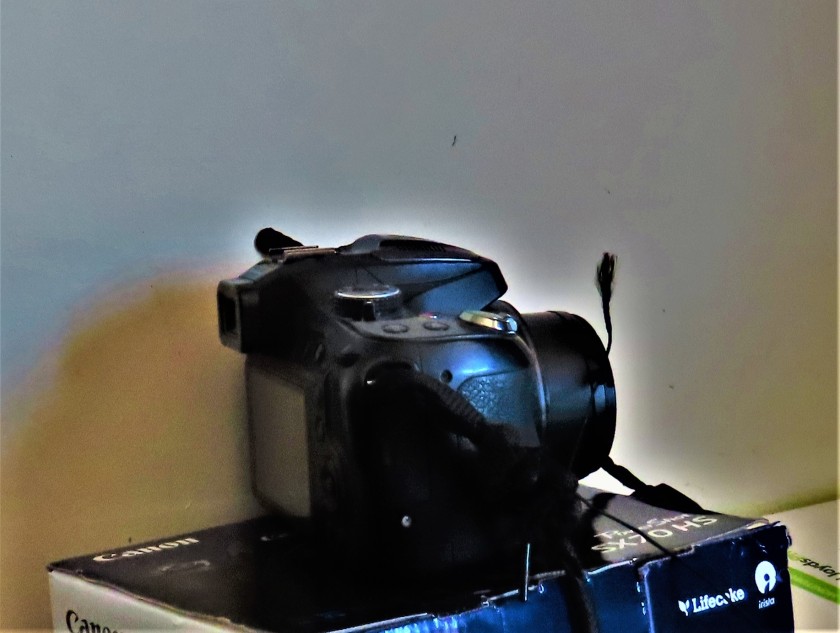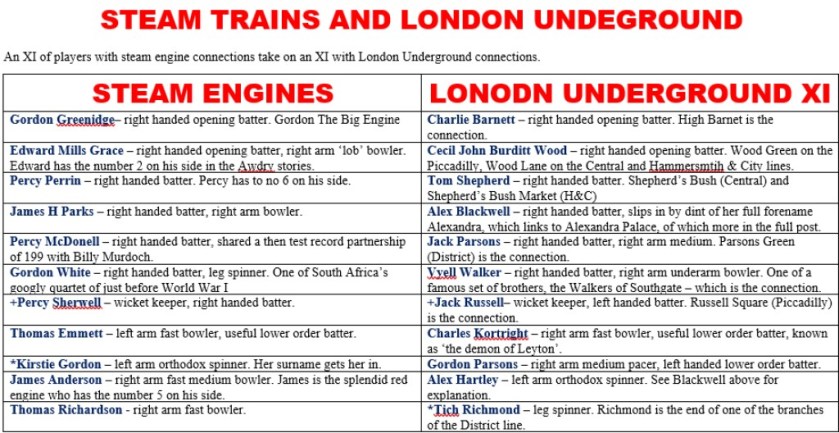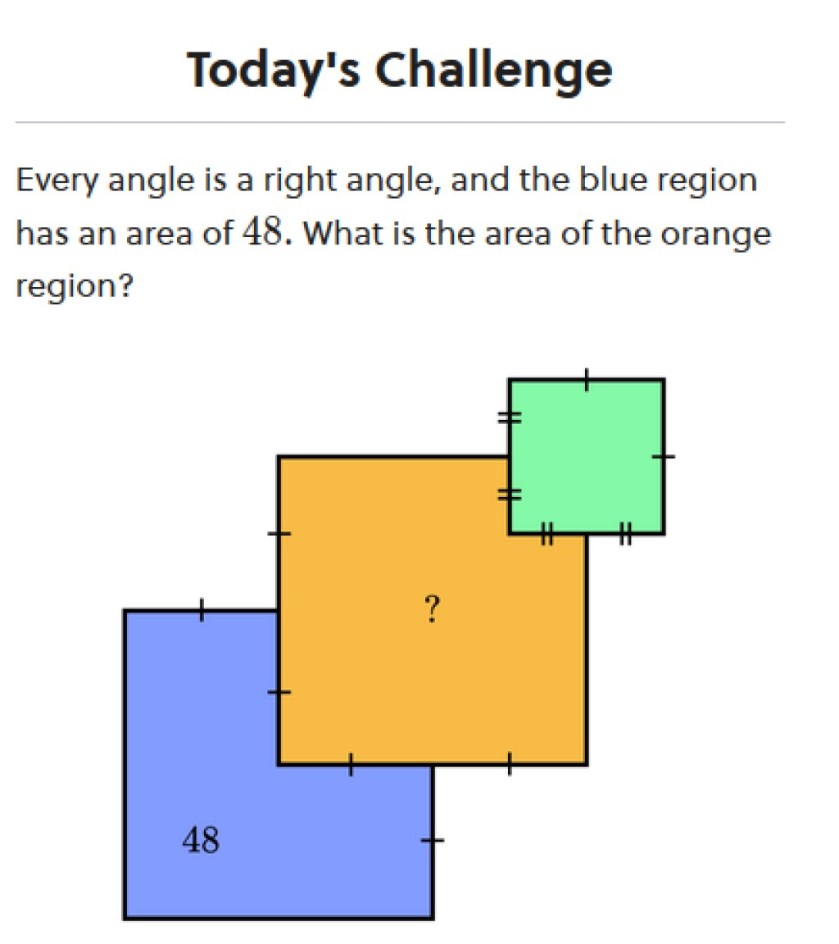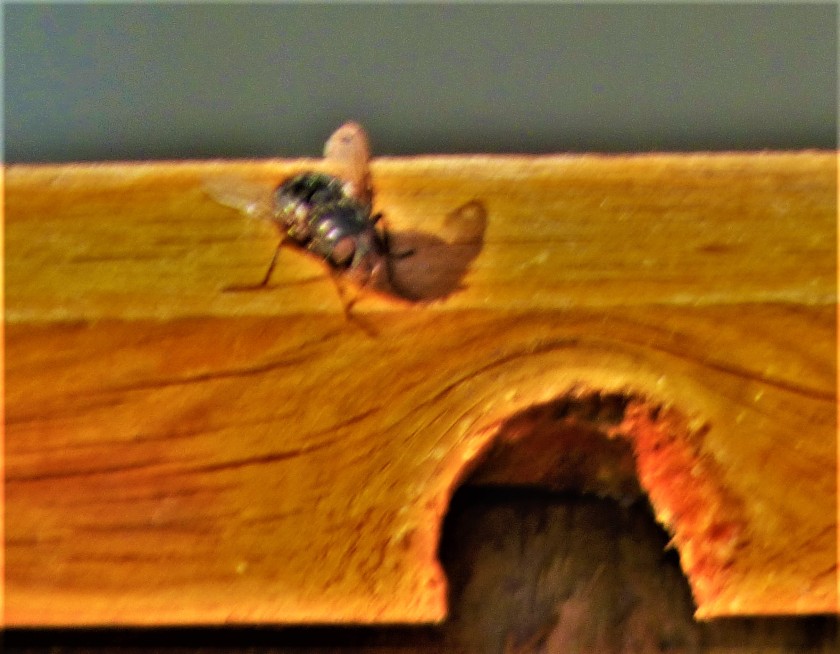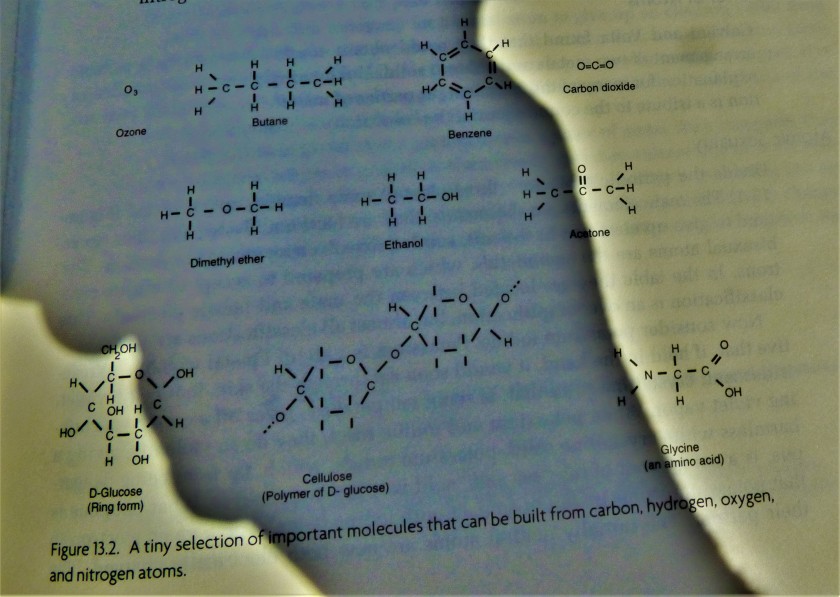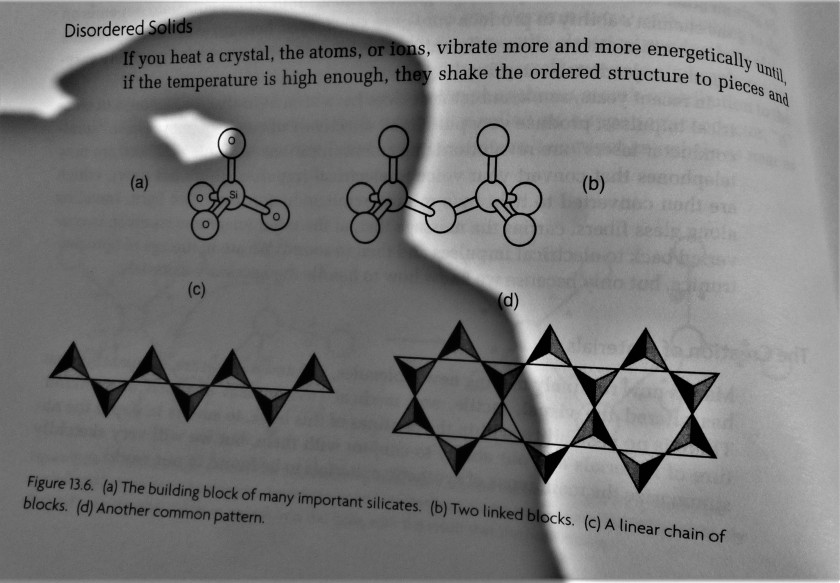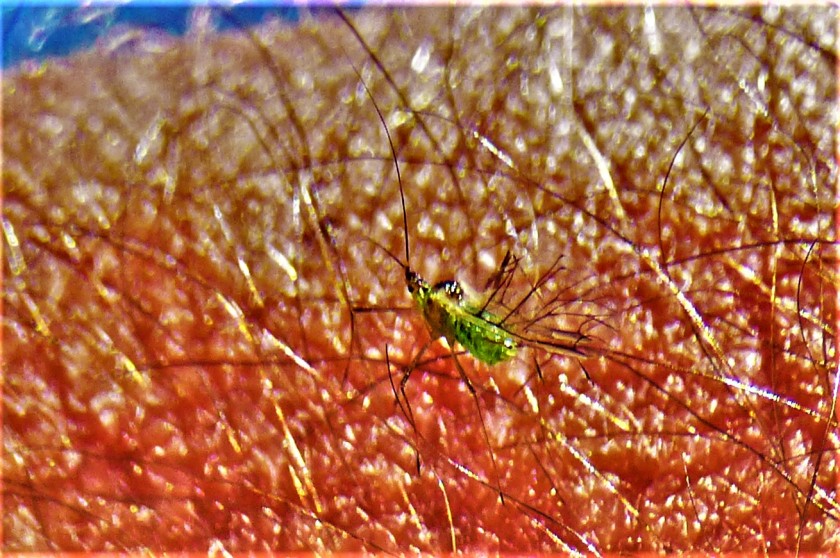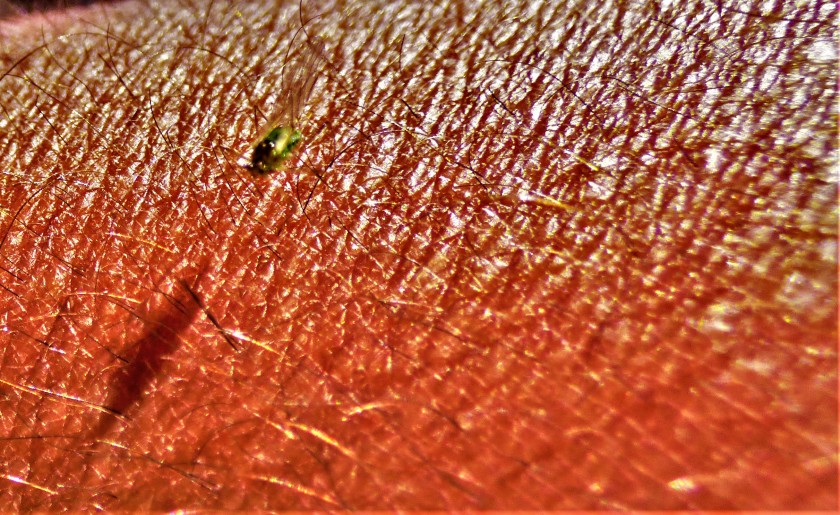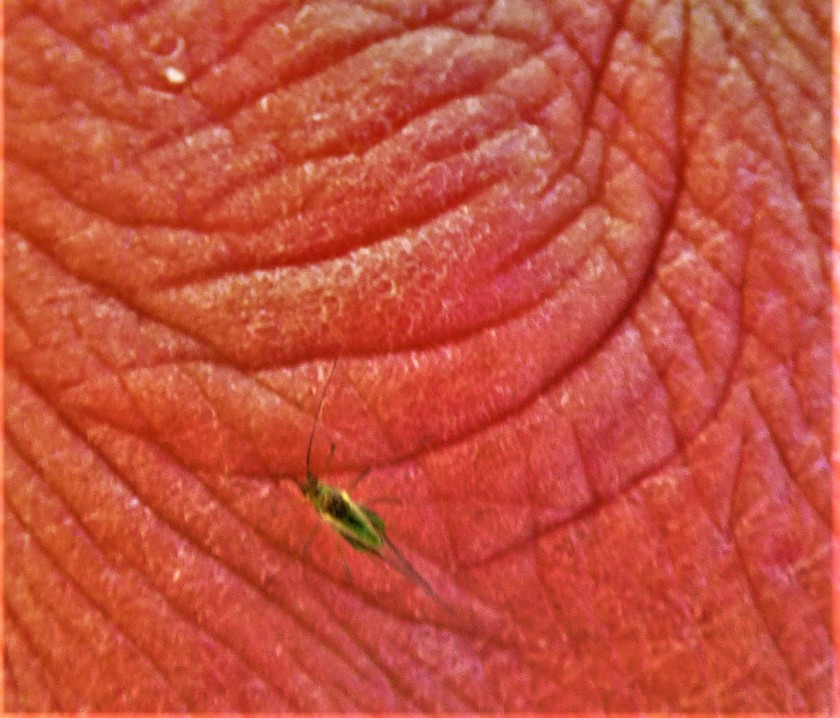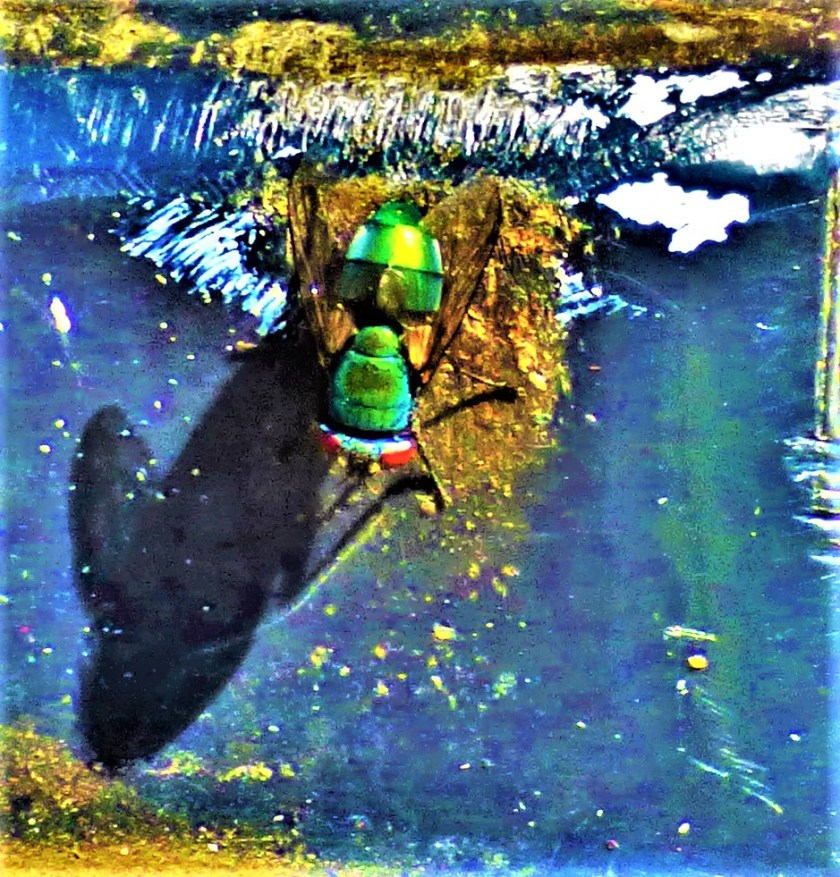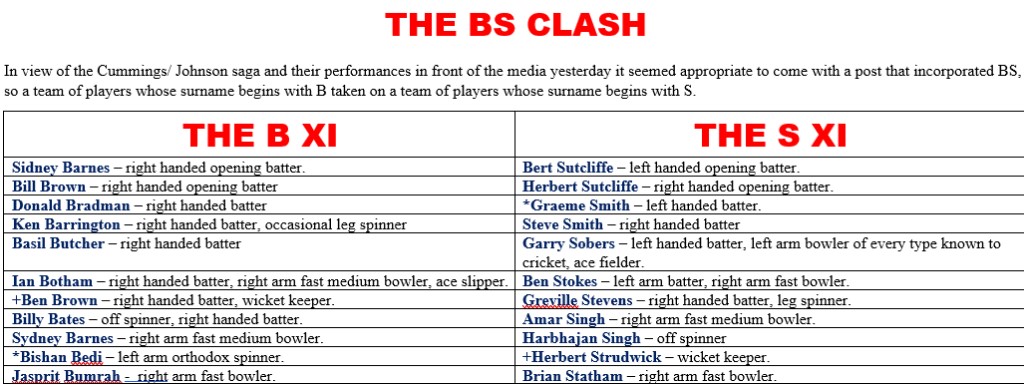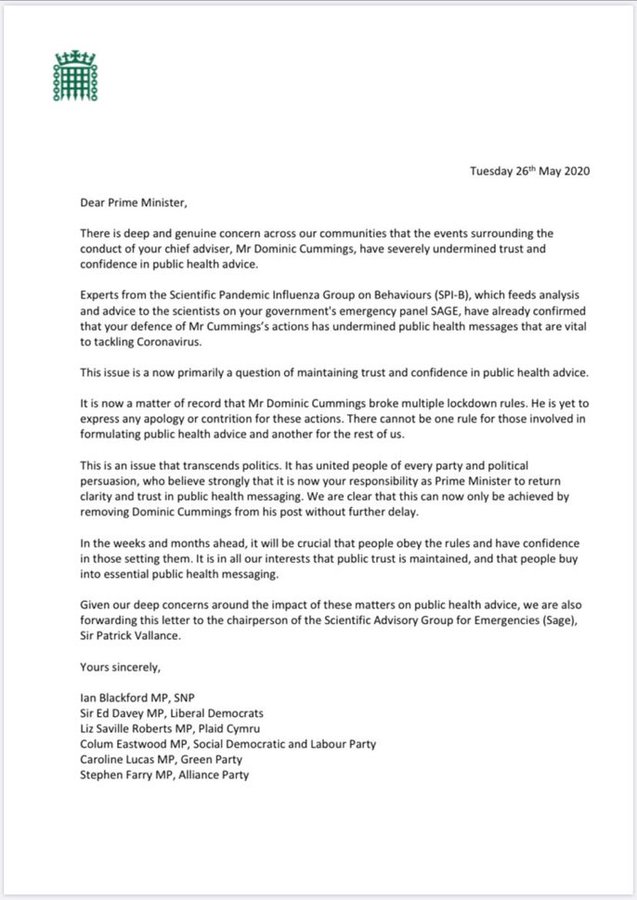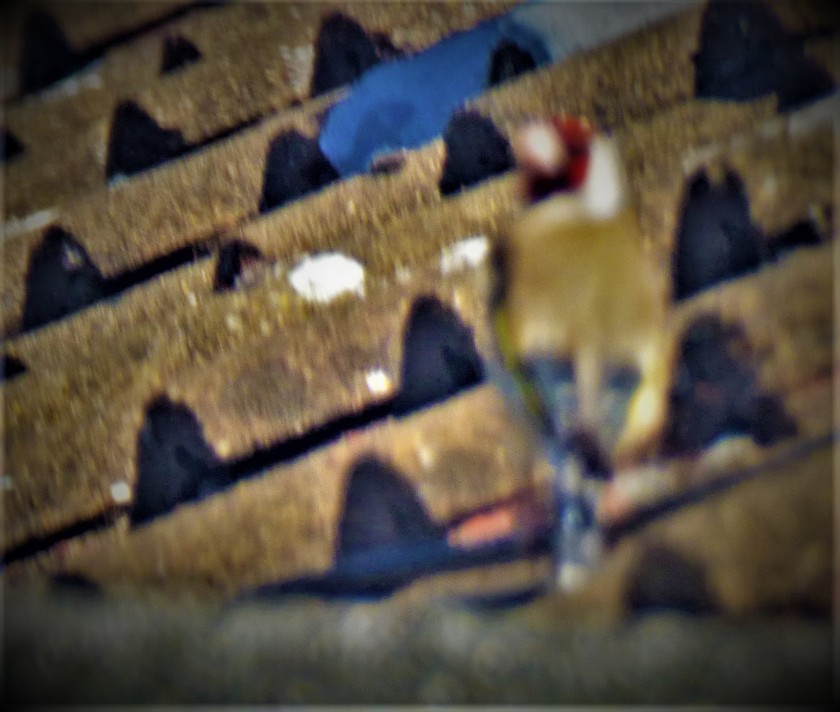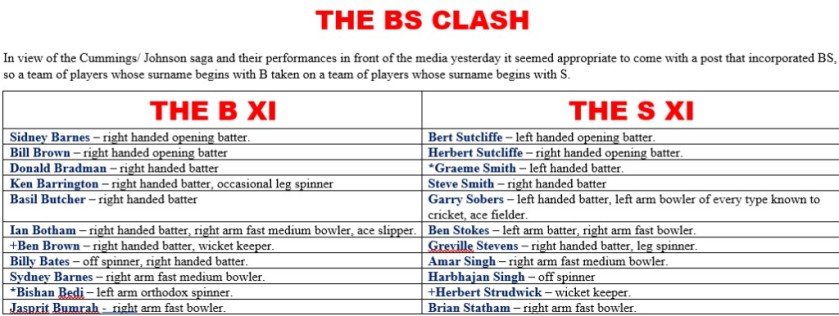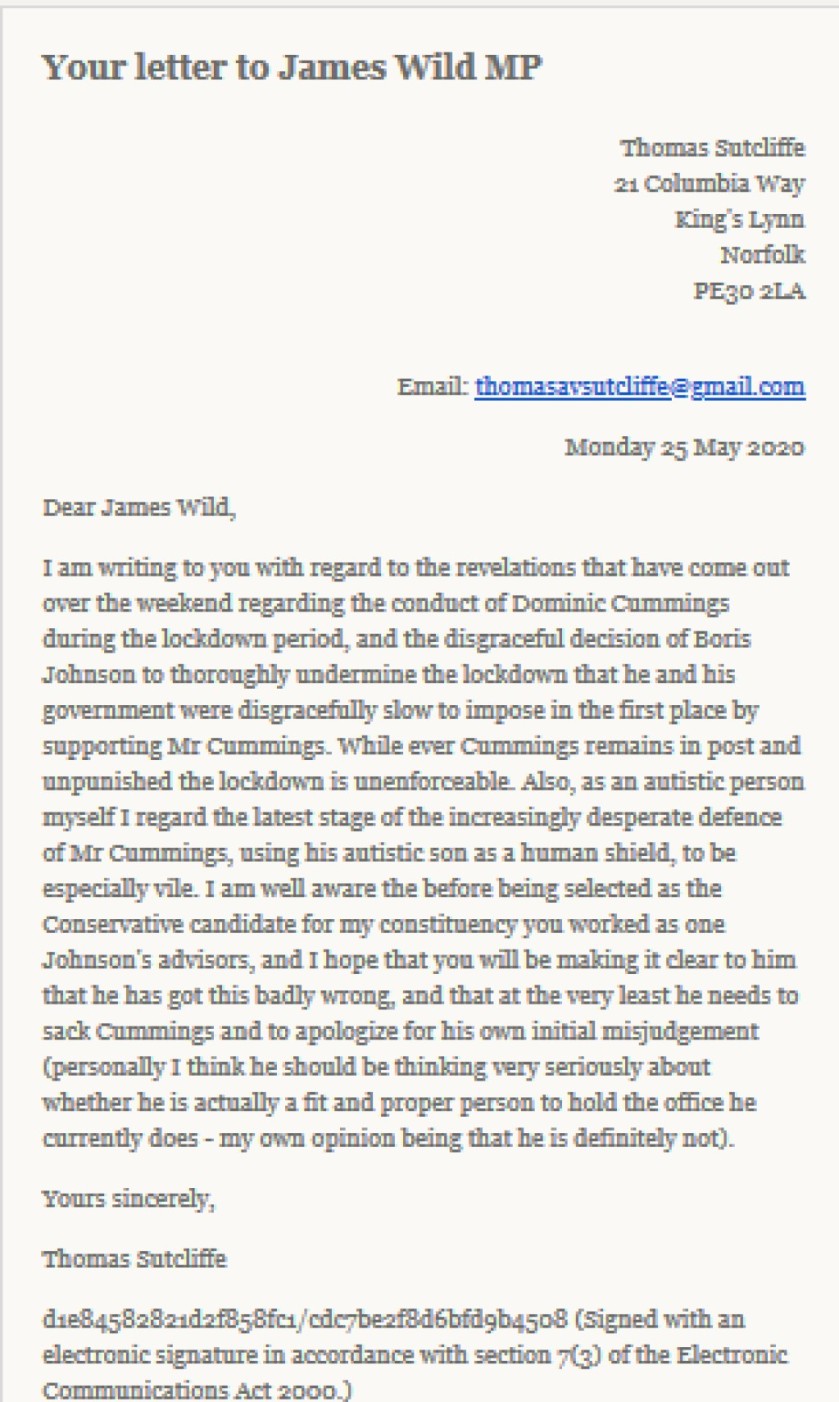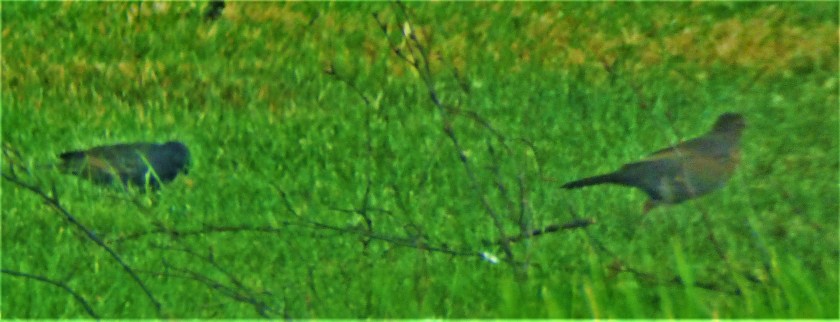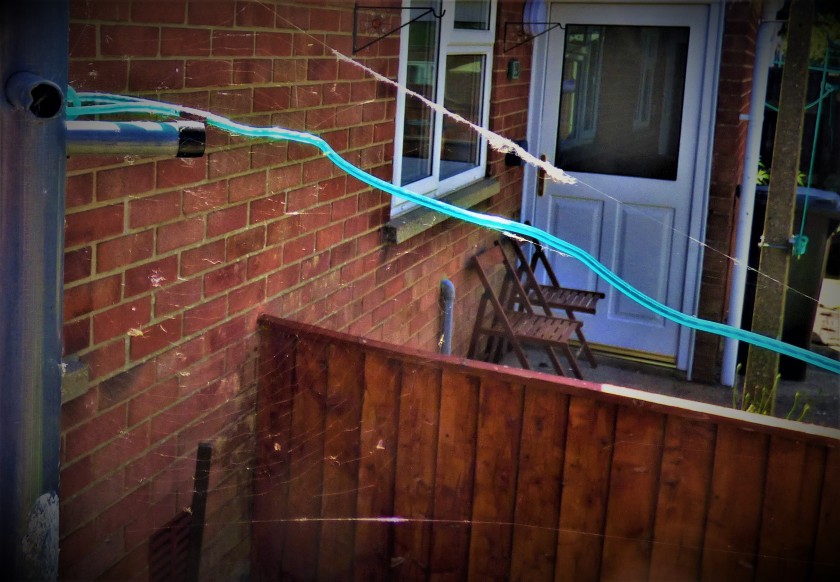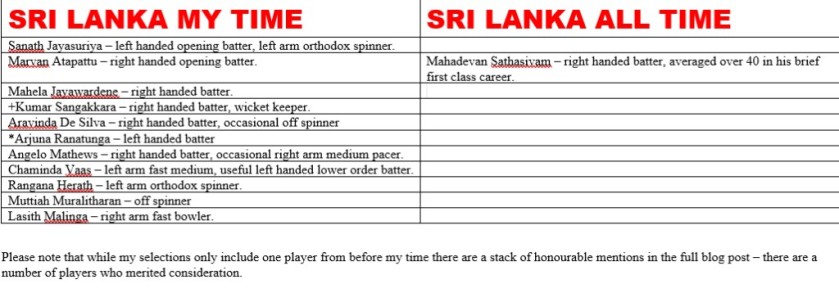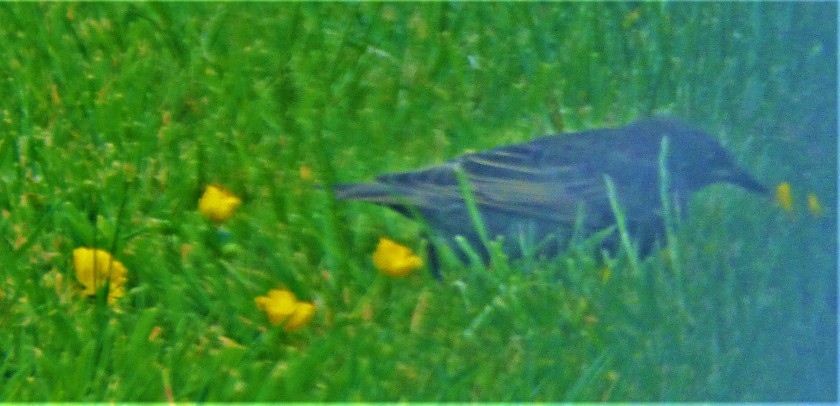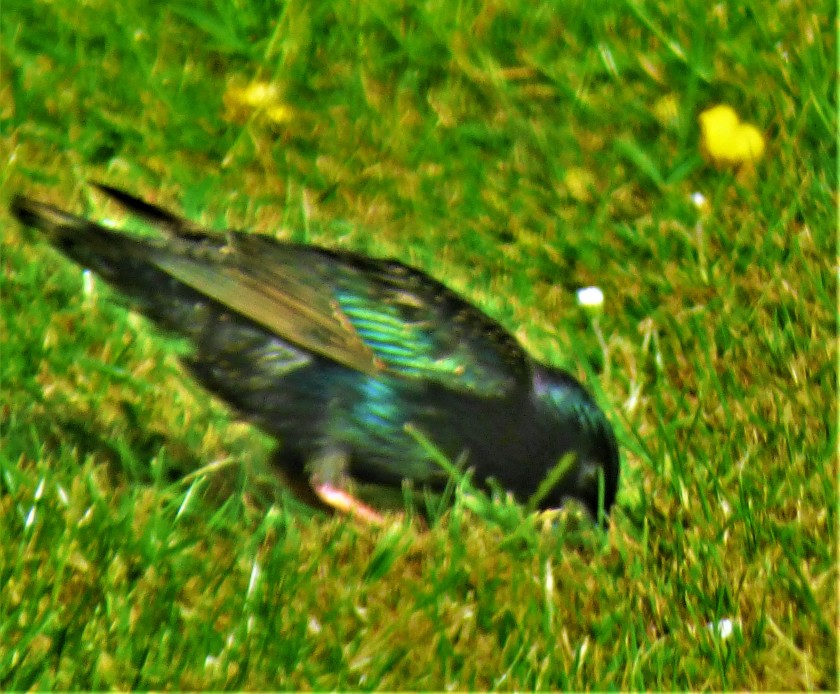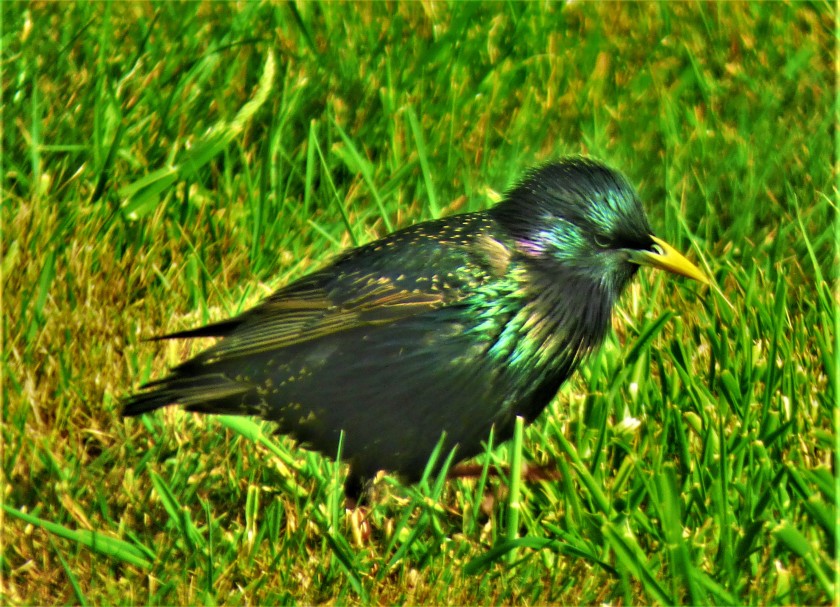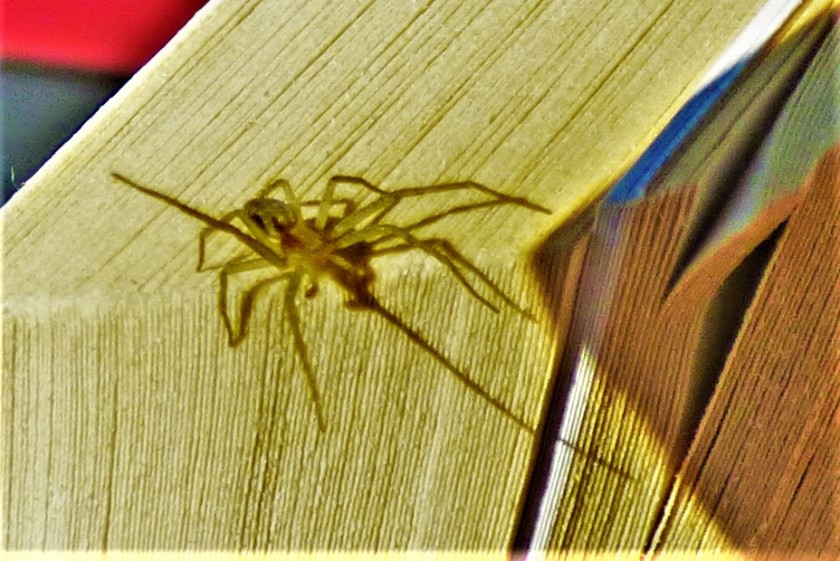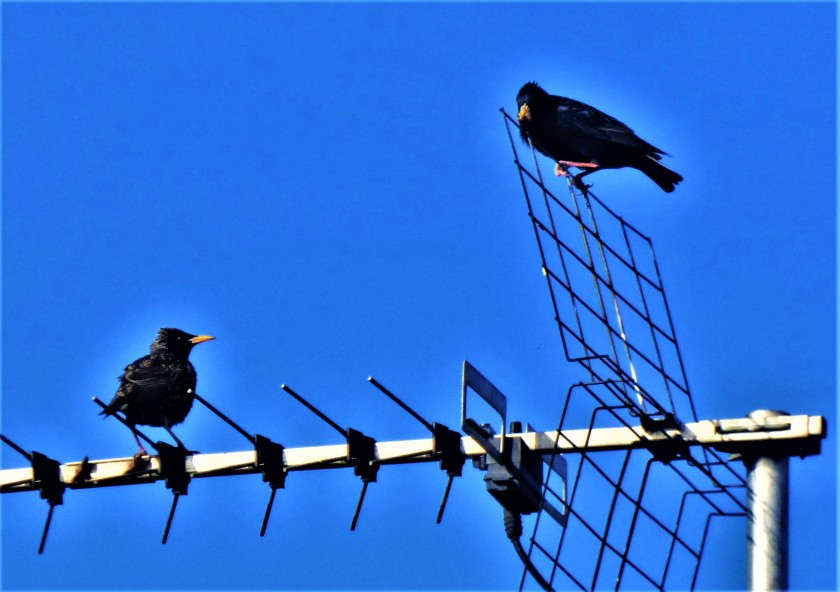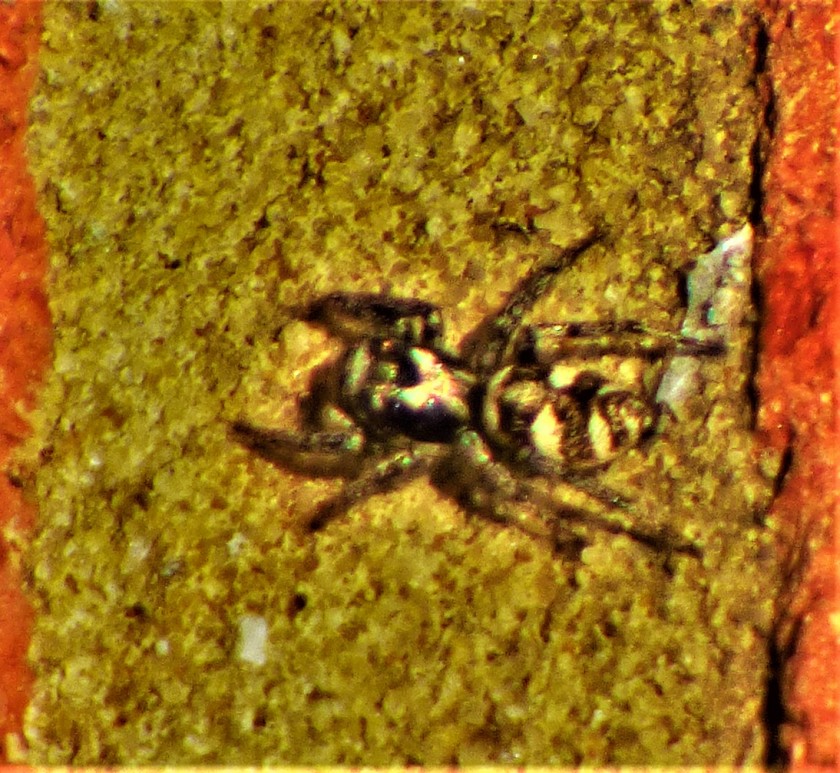INTRODUCTION
Welcome to the 45th birthday special edition of my ‘all time XI‘ series. I have selected one team with a specific eye to the landmark itself, and the second with an eye to entertainment value.
THE BRIEF IN DETAIL
The teams who will do battle for the aspi.blog trophy consist of an XI all of whom have associations with the number 45. In each case I explain the connection with varying degrees detail. The other side is a side picked for entertainment value, although of course class is not overlooked. The Gentlemen v Players match at Lord’s in 1898 was scheduled so that the third day thereof was WG Grace’s 50th birthday (see David Kynaston’s book “WG’s Birthday Party”), while eight years later WG again marked his birthday by batting against the Players at Lord’s, and played a crucial innings of 74.
THE 45ERS
- Rachael Heyhoe-Flint – right handed batter. Her test average was 45.54, which tecnically rounds to 46, but I allowed myself this tiny degree of latitude. Her best test score was 179 against Australia. It is appropriate that as I listen to ‘retrolive’ commentary on the 2019 World Cup final there is a someone who won a world cup for England in action (she captained England to success in the 1973 Women’s World Cup, the first such tournament ever played).
- Justin Langer – left handed opening batter. He had a test average of 45.27. His test best was 250 against England.
- Tom Graveney – right handed batter. He averaged 44.91 in first class cricket, which to the nearest whole number is 45. His test average was a little less, a mere 44.38. His highest test score was 258 against the West Indies. He holds two niche first class records – he scored 200 in the lowest ever team score to feature such an innings, and he is also alone in scoring over half of his team’s score in each innings of a first class match.
- Kumar Shri Ranjitsinhji – right handed batter. He averaged 44.95 in test cricket, which to the nearest whole number is 45. His two test centuries were both 150+ scores – 154 at Old Trafford on debut and 175 at Sydney in the opening match in the 1897-8 series.
- Ellyse Perry – right handed batter, right arm fast medium bowler. Her combined average across the three international formats is 44.66 (4,864 runs in total for 109 times out), which to the nearest whole number is 45. You may consider that using an all-format average is a slightly sneaky way of including someone, but I consider this to be entirely justified, especially given who it enables me to pick.
- Brian Close – left handed batter, right arm off spinner, right arm medium pace bowler. He gets in because he played his last test series (against the West Indies in 1976) at the age of 45, a mere 27 years after making his debut at the highest level.
- +Mark Boucher – wicket keeper, right handed batter. In total across tests and ODIs he made 45 stumpings, which qualifies him for this team (Bert Oldfield in many fewer matches, tests alone, made 52, while Eng;and’s Sarah Taylor made over 50 in each of ODIs and T20Is. Boucher did almost all of his keeping at the highest level to quick bowlers which is why his stumping tally is low for so accomplished and enduring a practitioner.
- *Ian Johnson – off spinner, useful lower order batter. He was literally the first name on tbis team sheet because he played precisely 45 test matches. In the 45th and last he took his tally of test runs to precisely 1,000, thereby completing the career double. He was captain of Australia in between Lindsay Hassett, who succeeded Bradman, and Richie Benaud, another spinner who could handle a bat as well.
- Gubby Allen – right arm fast bowler, useful lower order batter. His last international appearances came when at the age of 45 he captained a tour party to the West Indies. He once scored a test century from no9 – 122 against New Zealand as he and Les Ames (137) put on 246 for the eight wicket, England rebounding from 190-7 to tally 454.
- Harold Larwood – right arm fast bowler, useful lower order batter. Setting aside his 33 wickets in the 1932-3 Ashes series, in the rest of his test career he managed 45 scalps.
- John Traicos – off spinner. The ultimate multinational cricketer, born in Egypt to parents of Greek descent, he turned out for South Africa as a youngster. Then, when Zimbabwe were promoted to test status he played for them at that level as well, and by the time the great moment arrived, 22 years after his last appearance for South Africa, he was 45 years old.
This team has a good top six, of whom two, Perry and Close, could also weigh in with the ball, a top of the range keeper, and four fine bowlers, of whom three are capable of contributing with the bat. The balance is not ideal, with both spinners being off spinners, but it is still a side that should give a good account of itself, and given the constraints around selection I am pleased with it. On the name 45ERS, USian readers will recognize ’49ers’ as the name of a famous sporting franchise, which reflects the 1849 California gold rush (they are, or at least were, based in San Francisco), and I adapted that name to suit my purposes.
THE ENTERTAINERS XI
- Sanath Jayasuriya – left handed opening batter, left arm orthodox spinner. The star of the 1996 World Cup, his finest test batting display was probably the 213 he made at The Oval in 1998, which gave Muralitharan the opportunity to spin England to defeat, duly accepted.
- Virender Sehwag – right handed opening batter, occasional off spinner. The only batter ever to score a 100+ runs in each session of a test day. He made a century on test debut, and he is definitely among his country’s all time top five openers (Agarwal and Sharma, the current incumbents would be there in most reckonings, Gavaskar’s record speaks for itself and Vijay Merchant, at a time when India by and large struggled had a test average of 47.
- Graeme Pollock – a magnificent and all-attacking batter, with an average of 60.97 in test cricket.
- Viv Richards – right handed batter, occasional off spinner. The man who gave cricket ‘intimidatory batting’.
- Garry Sobers – left handed batter, left arm bowler of every type known to cricket. The most complete all rounder the game of cricket has ever known. In 1971-2 he scored 254 for The Rest of The World versus Australia, an innings that Don Bradman described as the greatest he evr saw played in Australia.
- George Hirst – right handed batter, left arm pace bowler. One of the two subjects of the famous question and answer: “Who is the world’s best all rounder?” “He comes from Kirkheaton, bats right handed and bowls left, and that is all that can be saud for sure.” Hirst was more aggressive in approach than Rhodes, and was also noted as one of the most brilliant fielders of the day.
- Leslie Ames – right handed batter, wicket keeper. The man who won the Walter Lawrence trophy for the fastest first class hundred of the season twice in its first three seasons. Over 400 of his 1,100+ first class dismissals were stumpings, a tribute both to his skill standing up and to the spinners who played for Kent at that time.
- *Billy Bates – off spinner, useful lower order batter. Opposite number to Ian Johnson. He averaged 27 with the bat and 16 with the ball in his 15 match test career, which was terminated by an eye injury.
- Frank Tyson – right arm fast bowler. My pick to ‘keep Larwood honest’ – how’s that for a tasty clash.
- Sydney Barnes – right arm fast medium. His speciality was a leg break delivered at fast medium pace, and 189 wickets in 27 tests at16.43 each, 77 of them in 13 matches down under, is testament to his effectiveness.
- William Mycroft – left arm fast bowler. He was the first ever to take 17 wickets in a county match (17-103 for Derbyshire v Hampshire in 1876 – Hampshire sneaked home by one wicket in spite of his efforts). He took his first class wickets at 12.09 each, but was in his prime just too early to play test cricket.
This team has a powerhouse top six, all attacking players by instinct, two fo them genuine all rounders, an aggressive keeper batter and wonderful depth and variety in the bowling department – right arm pace from Tyson, left arm pace from Mycroft, Hirst and Sobers, off spin from Bates, with Sehwag and Richards as back up, Barnes’ craft and guile which serves as a leg spin equivalent, and left arm spin from Sobers or Jayasuriya.
THE FIGHT FOR THE ASPI.BLOG TROPHY
Unsurprisingly given the selection constraints on the 45ERS, the Entertainers would start as strong favourites, but I would expect it to be a fine contest, well worth watching. I would hope for the curator to produce a pitch with pace and bounce that also offers turn for the spinners.
A QUIRK ABOUT THE NUMBER 45
45 X 45 = 2,025 and 20+25 = 45
45 x 45 x 45 = 91,125 and 9+11+25 = 45
45 x 45 x 45 x 45 = 4,100,625 and 4+10+06+25 = 45
The sequence ends at this point – there is a way of making the digits of 45 x 45 x 45 x 45 x 45 add up to 45 but involved a lot more in the way of ‘cooking’ than merely using a leading zero which would not normally be present. However, no other number has arrangemnets of this nature for its second, third and fourth powers.
PHOTOGRAPHS
My 45th birthday special post is at an end, so all that remains is to apply my usual sign off…









